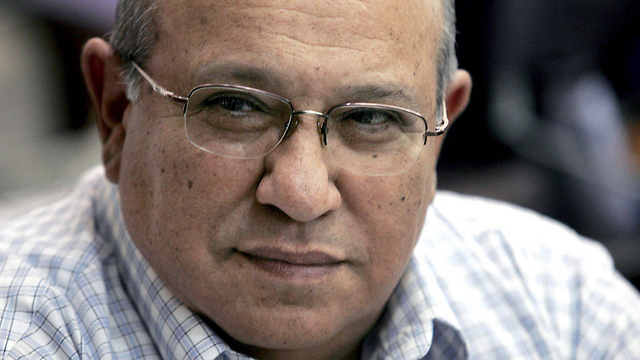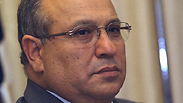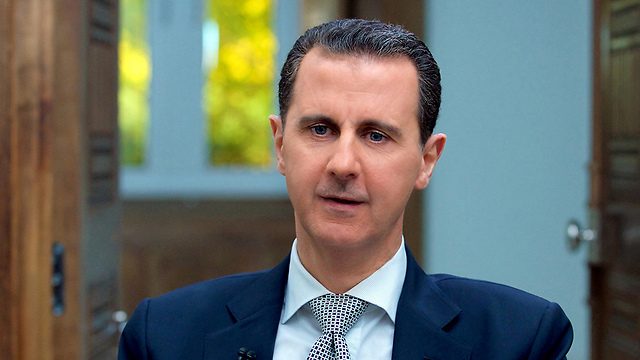
Mossad and Syrian reactor: Sometimes, you just need a little luck
Analysis: According to foreign reports, Israel’s secret service didn’t know that the Syrian official visiting Vienna had information about the reactor being built in Deir ez-Zor for a simple reason: No one in Israel was aware of the reactor’s existence. In addition to their professionalism, courage and resolve, the intelligence people were also very lucky.
Assad may have been a serial gambler, but there’s one thing he didn’t gamble on: How much the Mossad and Military Intelligence Directorate (AMAN) knew about what was going on in his country.
Assad Jr. has become really obsessed with the Israeli intelligence, which he both loathes and admires. He is convinced that any telephone or digital message transmitted in Syria is intercepted by the Israeli intelligence. “He truly believed,” a senior Unit 8200 (the central SIGINT AMAN division) says with a smile, “that every time Mustafa called Muhammad, Moishele was listening.”

To evade the Israeli surveillance, Assad instructed General Muhammad Suleiman, the coordinator of his special black projects, to carry out his special activities through an entire system that was completely separated from the rest of the Syrian security establishment. Assad permitted Suleiman to keep the system’s existence and activities even from the highest-ranking officials, including the chief of staff and defense minister. When Israel eventually found out about this system, significantly late, AMAN began referring to it as “General Suleiman’s army of shadows.”
Suleiman instructed his people to avoid transmitting any message in electromagnetic ways, and to exclusively use physical copies. He established an organizational system which remained completely transparent to the Israeli intelligence for many years, despite the huge resources Israel invested in Syria to ensure that nothing important escaped its eyes, and mainly its ears.
The biggest secret was concealed by General Suleiman in the Deir ez-Zor district, in northeast Syria.
And now, as the versions surrounding Operation Out of the Box have started piling up, it turns out that in addition to professionalism, courage and resolve, the intelligence people had something else on their side: Luck.
The selective written material distributed by the IDF spokesperson to the media in the past 24 hours, which fails to mention the Mossad, reveals that there was indeed a suspicion in AMAN that Syria was developing a nuclear project, probably with the North Koreans’ help. But that was a thesis that was raised by only one officer holding the rank of major, who—as is the tradition in AMAN—was able to push the idea up the chain of command (he was later promoted to the rank of lieutenant colonel for his original thinking). In spite of the entire discussions held on the issue, the Research Department eventually did not accept his version or reach the conclusion that Syria was developing a nuclear weapon.
There is a difference between guiding the intelligence collection activity—in other words, a desire to deepen an investigation into a particular issue (and that happened in AMAN too in a limited manner—to actually obtaining the information at the end of the day. Unit 8200 or any other unit in AMAN were not the ones who eventually got their hands on the smoking gun.
In the Mossad, things are more complicated. The head of the organization at the time, Meir Dagan, decided shortly after taking office to narrow down the target list, and focus primarily on Iran’s nuclear program and on the Iranian and Syrian aid to jihad organizations in the Middle East. Dagan had a limited interest in the Syrian army. He thought the little resources the organization had should be diverted elsewhere. Dagan’s approach—a focused and concentrated effort on just a few targets—proved itself in certain places but carried a price in other places.
It was only thanks to a number of senior Mossad officials who argued with Dagan, that part of the attention was returned to Syria and to its nuclear energy organization.
Israel never claimed responsibility for the operation in Vienna, but according to a report in The New Yorker magazine, Ibrahim Othman, the head of the Syrian Atomic Energy Commission, went to Vienna to attend a meeting of the International Atomic Energy Agency—and the Mossad followed him, broke into his room and obtained ground images of the reactor. It didn’t know Othman had information about the reactor in Deir ez-Zor for a simple reason: No one in Israel was aware of the reactor in Deir ez-Zor. But that’s how it is with intelligence: Sometimes, you just need luck.
The information from Vienna waited in the Mossad’s drawers for weeks without being interpreted, because no one thought anything significant would come out of it. Things changed when members of Unit 8200 happened to visit the headquarters and inquire about the material. After the Mossad handed the raw material to the 8200 officers—again, without understanding that they had dramatic information in their hands—they stumbled upon the revealing images and reached the critical conclusion that Syria was building an atomic bomb.
It was only thanks to that information that the Israeli defense establishment was able to determine in an unequivocal manner, in a way that could be presented to the Americans as well, what was going on in that mysterious warehouse in Deir ez-Zor, which up until then was the subject of learned guesses.
The fact that the Mossad discovered the incriminating images quite by chance is interesting in itself, but we must remember: It was the operation—and not any learned meeting in AMAN—that started the chain reaction which ended with the reactor being bombed.
“I'd rather have lucky generals than good ones,” Napoleon Bonaparte used to say. And Meir Dagan was very lucky. While he himself didn’t believe Syria was developing a bomb, it was eventually his agency, under his command, and not any other intelligence agency in the world (although many tried to understand who North Korea was sharing its doomsday abilities with), that interpreted the secrets of Syria's main project—and led to its destruction.
Dr. Ronen Bergman, a senior correspondent for military and intelligence affairs at Yedioth Ahronoth and a contributing writer for the New York Times, is the author of Rise and Kill First : The Secret History of Israel's Targeted Assassinations.



















